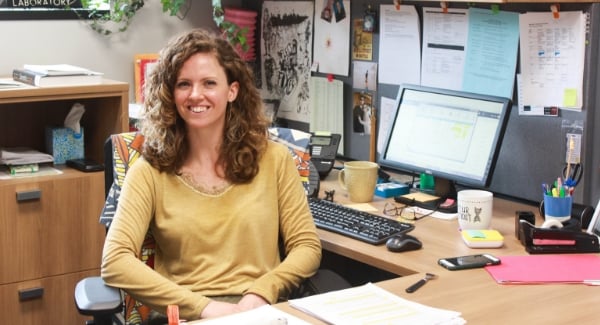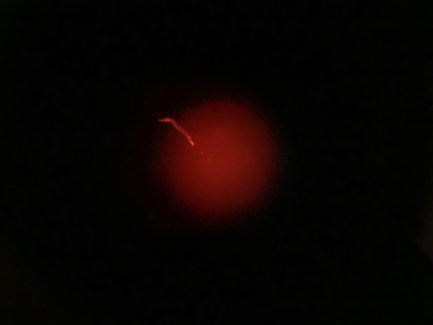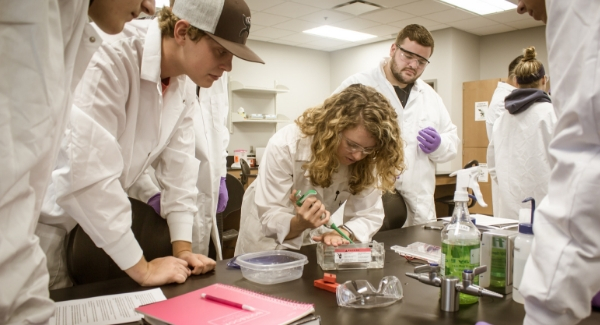Students enrolled in the cellular and molecular biology (CMB) lab this semester may have been expecting to work with cells — but instead, they got to work with worms.
Assistant Professor of Biology Kiley Hicks had taken a break from teaching CMB lab. When she stepped back into the lab for spring 2019, she decided to stick with what she knew.
Hicks worked with worms while obtaining her Ph.D. and knew they would be an exemplary teaching tool for her CMB class. Worms are easier for students to work with and are harder to kill than human cells.
Hicks’ knowledge of the worms became an advantage for the students.
At this point in their educational journey, students have taken a fair share of science courses. Hicks said they are expected to start an experiment from scratch rather than completing an experiment that has been pre-planned by their professor.

“They get a question, make a hypothesis, make an experiment to test that hypothesis, get some results and then present those results to the class,” said Hicks.
The CMB lab consisted of seven small groups of students who each chose their own topic.
“So they just get to choose their own topics and delve in. It’s all in worms because that’s what I do research on … I know how to deal with them and how to help them if things go awry,” she said.
One pair of students, Kevin Nguyen and Kimberly Stewart chose to create glowing worms.
Stewart had enrolled in the class excited to do fluorescent staining in cells but when she realized the class had been switched to experiments with worms, “she was bummed” Hicks said.
However, Hicks had dealt with fluorescent staining in worms all throughout her time at grad school and was able to help Stewart and Nguyen through the process. It was a satisfactory alternative for Stewart.
“They basically wanted to see if they could get that staining procedure down … then other students could use it to help answer questions,” said Hicks.

A bonus of this particular experiment, she said, was that students were able to use the new fluorescent microscope that was purchased only a year ago.
Claire Setter, Laura Shine and Lillian Huynh decided to research the relationship between serotonin and fat levels in C. elegans, a common type of nematode used for research.
“There’s some evidence that there is a link there that increasing serotonin can decrease fat storage, but it’s still very up in the air and we don’t know that that’s an actual correlation or causality for sure,” said Hicks.
“So they looked at that and were supplementing certain worms with serotonin and measuring the width of the worms under the microscope to see if they got more or less fat with or without serotonin. So that was a really fun one,” said Hicks.
Shine and Setter said, “We wanted to pursue this topic for its potential to shed light on how serotonin can be utilized to combat the obesity epidemic in humans. From our experiment, we were able to determine that serotonin successfully reduced the amount of fat in C. elegans, making it a promising potential solution in reducing fat levels in humans upon further research.”
Shine and Setter used this topic for their Scholars Day presentation. They weren’t the only students in the course to find interesting results, which came as somewhat of a surprise to Hicks.
Hicks said, “I’m always surprised anything works at all. It’s hard to get science to work. It’s very prone to error. You have to be really specific and you have to do a lot of thinking and prepping in order to make it work.”
Hicks began her career at Newman four years ago and said she thoroughly enjoyed teaching this course to the students she’d had since the beginning of their college journey.
“It’s fun to see them learn and grow and actually apply their knowledge,” she said. “They’re a great group of students.”

